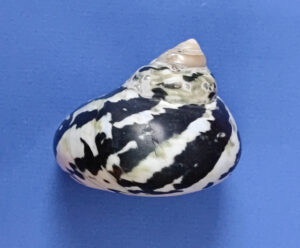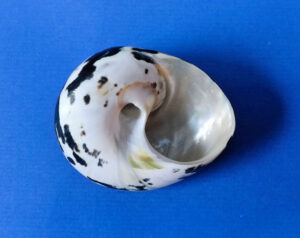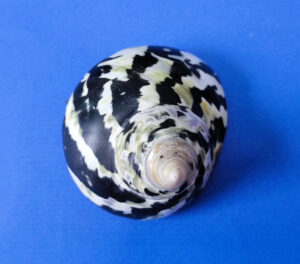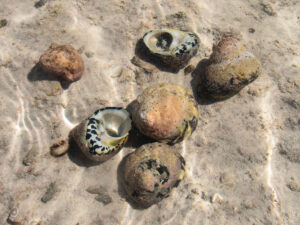West Indian Top Shell, Cittarium pica


 West Indian Top, Cittarium pica. Shell collected off the beach of Cozumel Island, Quintana Roo, March 2021. Size: 5.1 cm (2.0 inches) x 4.3 cm (1.7 inches) x 4.0 cm (1.6 inches). Photographs and identification courtesy of Marina Sutormina, Stockholm, Sweden.
West Indian Top, Cittarium pica. Shell collected off the beach of Cozumel Island, Quintana Roo, March 2021. Size: 5.1 cm (2.0 inches) x 4.3 cm (1.7 inches) x 4.0 cm (1.6 inches). Photographs and identification courtesy of Marina Sutormina, Stockholm, Sweden.
 West Indian Top, Cittarium pica. Underwater photograph taken in coastal waters off Cozumel Island, Quintana Roo, March 2021. Photograph and identification courtesy of Marina Sutormina, Stockholm, Sweden.
West Indian Top, Cittarium pica. Underwater photograph taken in coastal waters off Cozumel Island, Quintana Roo, March 2021. Photograph and identification courtesy of Marina Sutormina, Stockholm, Sweden.
The West Indian Top, Cittarium pica, (Linnaeus, 1758), a gastropod and member of the Tegulidae Family of Top Shells. They are also known as the Magpie Shell and as Bulago and Wilk in the Caribbean. They are the only living member of the Cittarium Genus.
The West Indian Top Shell is thick and heavy with rounded shoulders and a low conical profile. Their spine is conodal containing six convex whorls. Their body whorl is large, depressed, and globose with a simple outer lip. They are white in color with black zigzags on each whorl with a white aperture. The inner shell surface is nacreous. They have a wide and deep umbilicus. Their columella is arcuate, composed of heavy porcellanous callous that surrounds half the wide, deep, umbilicus that is devoid of structure and is deeply notched in the middle. Their aperture is semicircular; and, their parietal callus is glossy and delicate. The West Indian Top Shell is large, reaching a maximum of 13.7 cm (5.4 inches) in diameter. The snail has a muscular foot which aids in slow crawling and attachment to rocks.
The West Indian Top Shell are benthic found on or under rocks along exposed and moderately sheltered coastal areas subjected to wave action in both the intertidal and subtidal zones in areas very close to the ocean surface, at depths up to 7 m (23 feet). They are found in close proximity with Littorinidae, Nerita and Tegulas. They are active night-time herbivores that feed on a wide variety of algae (blue-green, green, red, brown), Sargassum and detritus. They have separate sexes. The females lay ribbon/jelly like masses on the substrate, with fertilization occurring externally via broadcasting. The eggs quickly develop into larvae that are planktonic and pelagic which settle out in three to five days. They have life spans of thirty years.
The West Indian Top Shell is a resident of Mexican waters of the Atlantic Ocean but is only found along the northern and east coasts of the Yucatán Peninsula in the Gulf of Mexico and the Caribbean.
The West Indian Top Shell has not been formally evaluated from a conservation perspective. They are common and stable in some regions with widely-distributed populations. However, in some regions they are subject to overfishing by artisanal fishermen and have been fished to near extinction with collection levels being undocumented, unregulated and unreported. They are now subject to protection in several areas. They are sold commercially and utilized for human food. Their empty shells provide homes for a wide variety of land and sea creatures including hermit crabs.